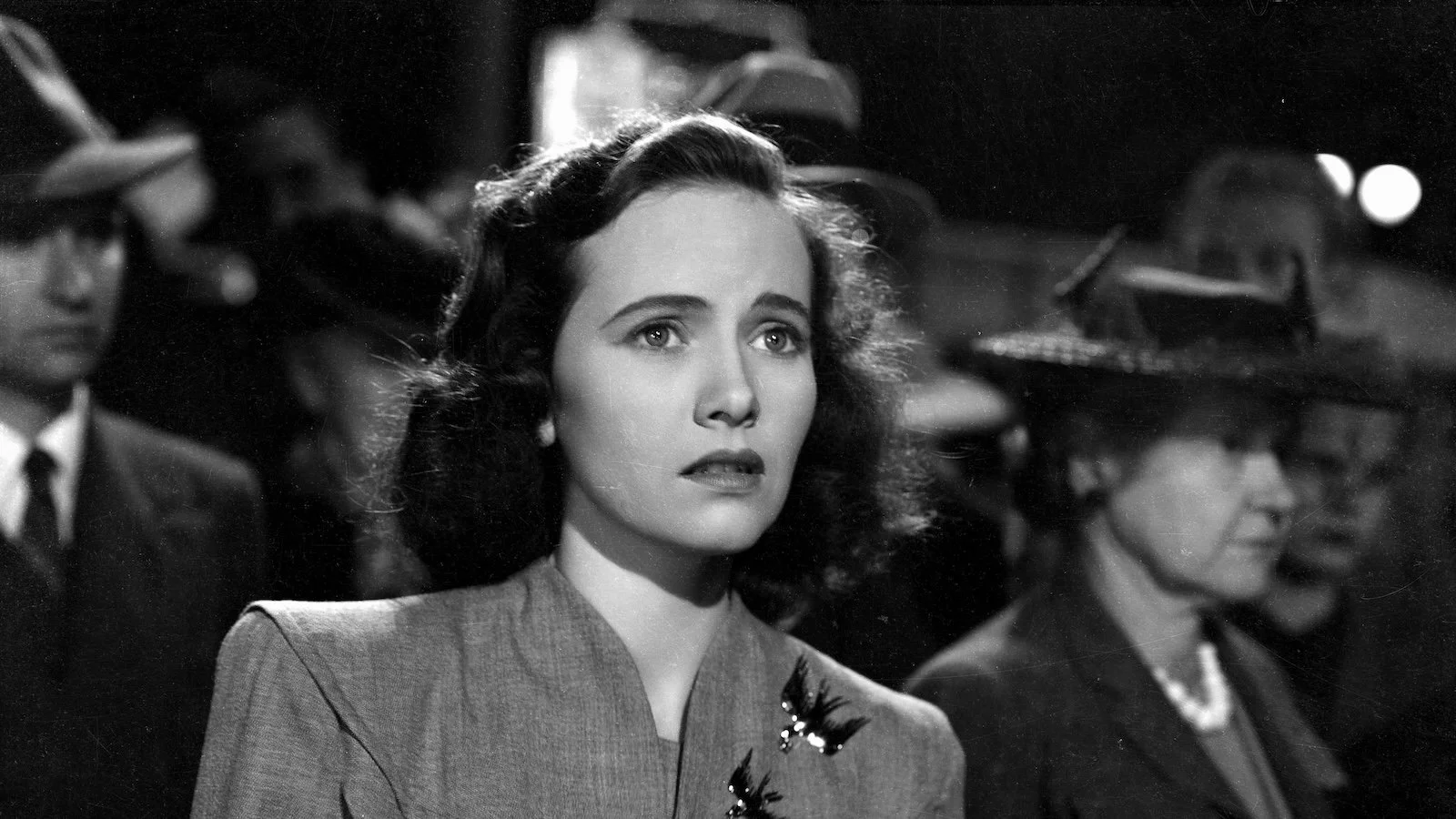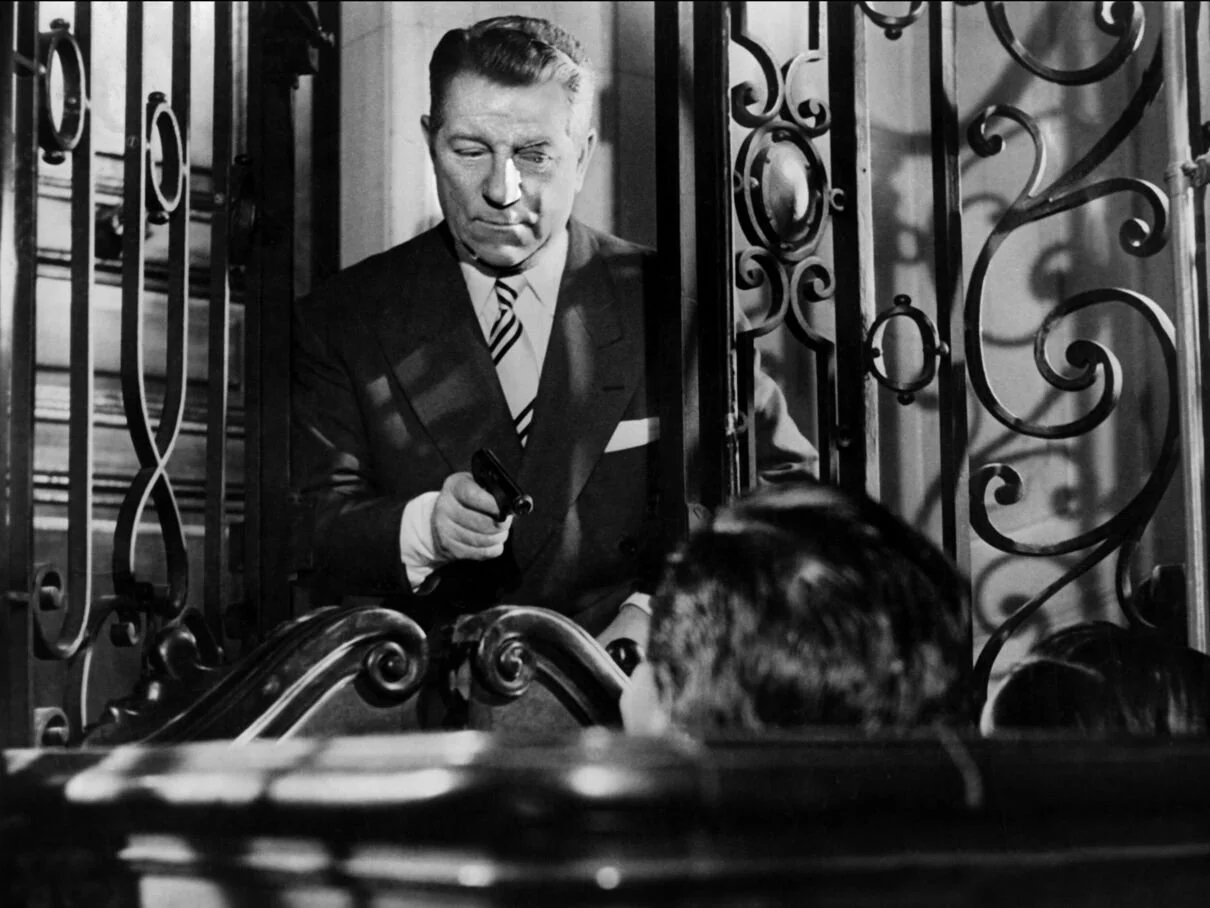Fellini’s 8 ½ (1963) Review
In Fellini’s 8 ½ cinema and its making become the metaphor for art’s ultimate frightening frivolity. Cave paintings, ancient tribal tattooing, richly ornate religious ceremonies, Greek statuettes, the Sistine Chapel, Dante’s Commedia or Homeric epics: what’s the point to all this?
The Wrong Man (1956) Review
What do people see when they look at you? Henry Fonda's character, based on one real and unlucky fellow named Manny Balastrero, is often subjected to this question, a most brutal question, in Alfred Hitchcock’s The Wrong Man (1956).
Laura (1944) Review
That's the tragedy underneath the noirish police procedural of Laura (1944): Laura is a name which might not stand for anything in the end. She's a copywriter and a social climber; she’s also a dead body and a murder case to be solved; the lover to one and the rival to another; she's a young and beautiful socialite, and also a vain intellectual's pet project for the perfect lady; she's a dream-girl for the detective, and a portrait on the wall; she is, finally, the astonishing twenty-four year old Gene Tierney— an assortment of ideals in search of a fixed reference.
F for Fake (1973) Review
Orson Welles’ F for Fake, a brilliant self-referential masterpiece, confronts this inconvenient problem in aesthetics: the author, as the presence behind the "original" work, its uniqueness, detainer of exclusive rights (property), who can only be understood in relation to his opposite, the faker.
Elevator to the Gallows (1958) Review
Louie Malle’s masterpiece Elevator to the Gallows (1958) is a work of sensual art: aesthetics.
Shadow of a Doubt (1943) Review
Like most Hitchcock films, Shadow of a Doubt concerns epistemic upheaval. It’s a tale on the dangers of knowledge. What happens once you know? Knowledge has a way of spoiling things, shattering hopes, replacing epistemic doubts for moral ones, curiosity for despair. It’s a traumatic experience to realize it was all an illusion.
To Be or Not To Be (1942) Review
Ernst Lubitsch’s To Be or Not To Be (1942), one of the greatest of comedies, is also, among many other things, a cinematic commentary on Shakespeare’s line “All the world's a stage, and all the men and women merely players”.
Mildred Pierce (1945) Review
Mildred Pierce (1945) is like a black-and-white Balzac story set in 1940s L.A. The intricacies of bourgeois society, work, status, the interests, the families, justice, crime, marriage and divorce: everything is traversed by money and an irresistible impetus to climb that social ladder and "make it".
The Big Heat (1953) Review
The Big Heat takes us back to the first book of Plato’s Republic, where Socrates and Thrasymachus dispute the definition of justice, and whether the unjust or the just life is more advantageous. Well, The Big Heat answers it: the unjust life is more advantageous and the unjust man is happier— Thrasymachus vindicated in the big city.
I’m Still Here (2024) Review
Walter Salles’ I’m Still Here (2024), a true story, taken to dramatic heights by lead actress Fernanda Torres, concerns the quotidian experience of political oppression, and the possibility of moral life under it, during the Brazilian military dictatorship (1964-1984) which severed the social expectations of a generation.
Diary of a Country Priest (1951) Review
One young priest’s journey to the ugly heart of Christianity.
The Bad and the Beautiful (1952) Review
Jonathan Shields (Kirk Douglas), a movie producer loosely based on David O. Selznick and Orson Welles, does not care about friendship, love, sex, honor or anything else for that matter: he merely uses these as auxiliaries for the only thing he really cares about: his pictures. And, boy, can he make ‘em.
Un flic (1972) Review
Jean-Pierre Melville’s Un flic, another of his ventures in noir territory and his final film, is a good, crafty thriller. It would have profited more if it had fully embraced its bluesy moods instead of dedicating itself to its more commonplace cop-robber elements.
Touchez pas au grisbi (1954) Review
A film of class, of elegance and thieves: that’s Jacques Becker’s Touchez Pas Au Grisbi (1954) - literally, “Touch Not the Loot”. Jean Gabin is effortlessly composed, impeccably dressed, an old-timer and an old-fashioned gangster. He doesn’t speak much and he doesn’t need to. His codes, his sense of honor, his integrity are better shown by Gabin’s expressions and slow-paced manners. The director Jacques Becker, as Truffaut said, is a master of tempo.
Shoot the Piano Player (1960) Review
François Truffaut’s 1960 film Shoot the Piano Player (Tirez sur le pianiste) is classic Nouvelle Vague, which really means film noir made by young Parisians, with occasional homages to other genres. Fast, jovial, carefree, but also conventionally fatalistic, as film noir should be. Charles Aznavour is perfectly cast as the stoic, ill-fated pianist.
Big Deal on Madonna Street (1958) Review
Mario Monicelli’s Big Deal on Madonna Street (I soliti ignoti, 1958) is likely one of the greatest capers in film history for it is the comic undoing of the genre. Here we have a classic post-war Italian film.





















